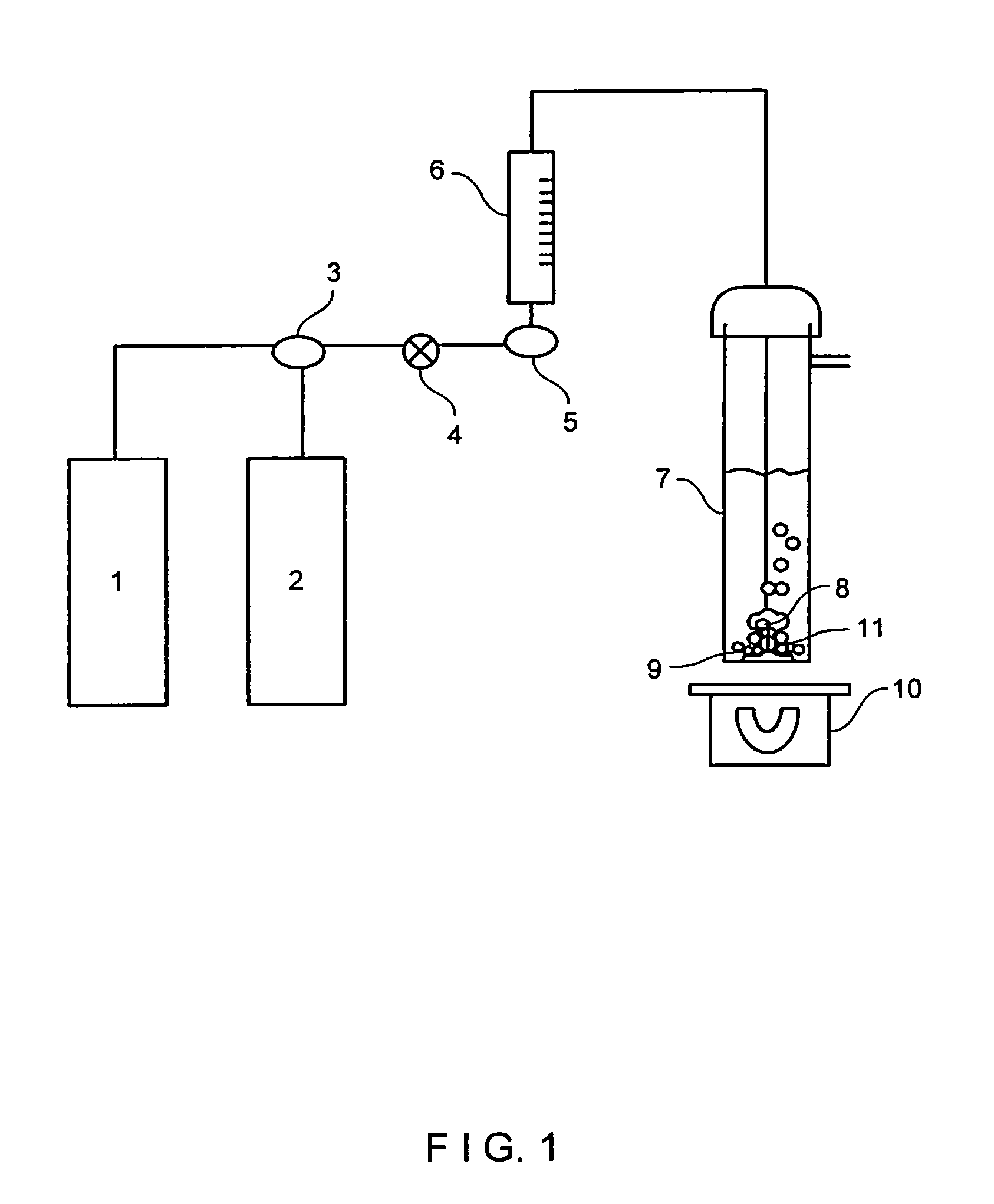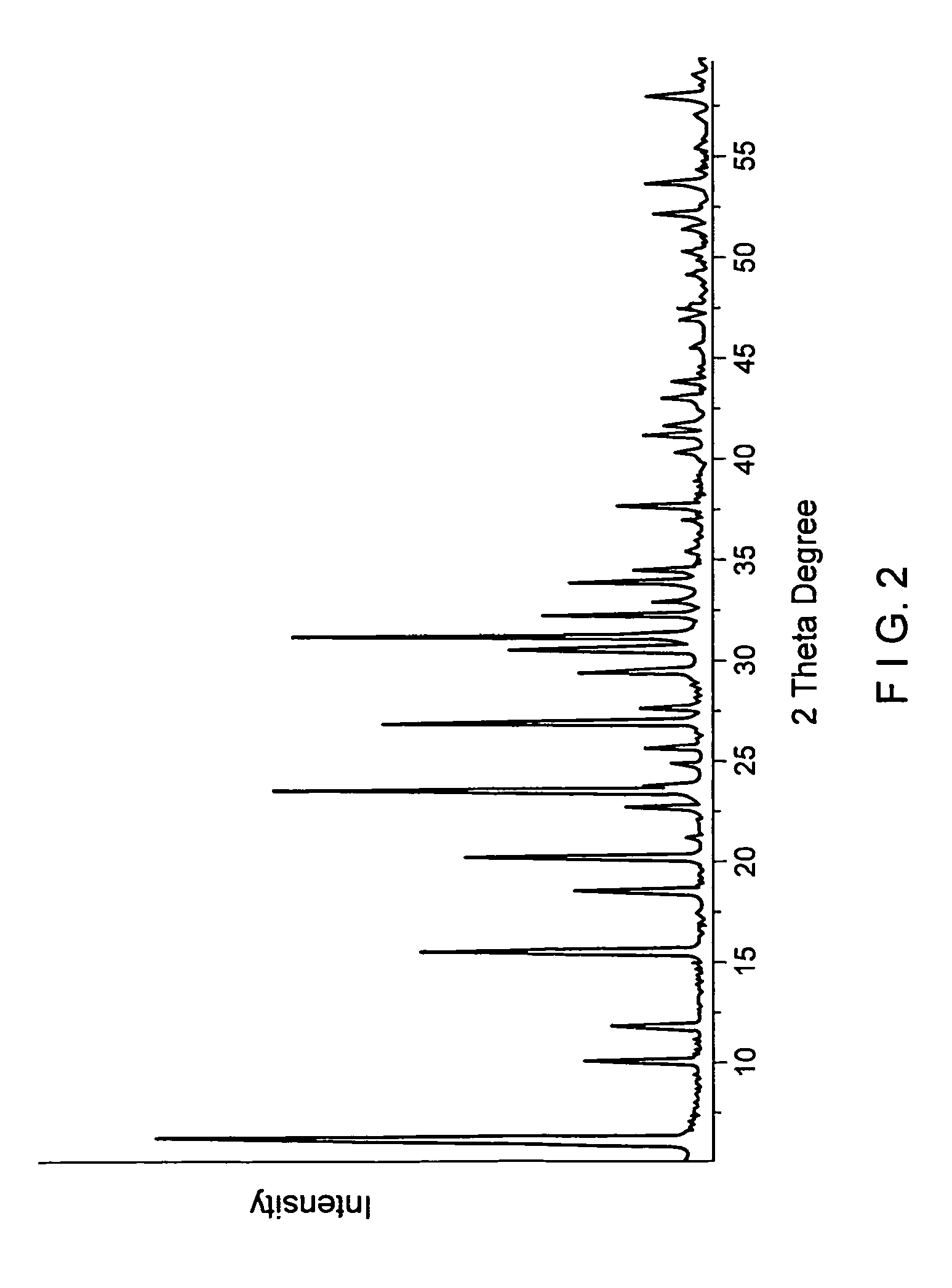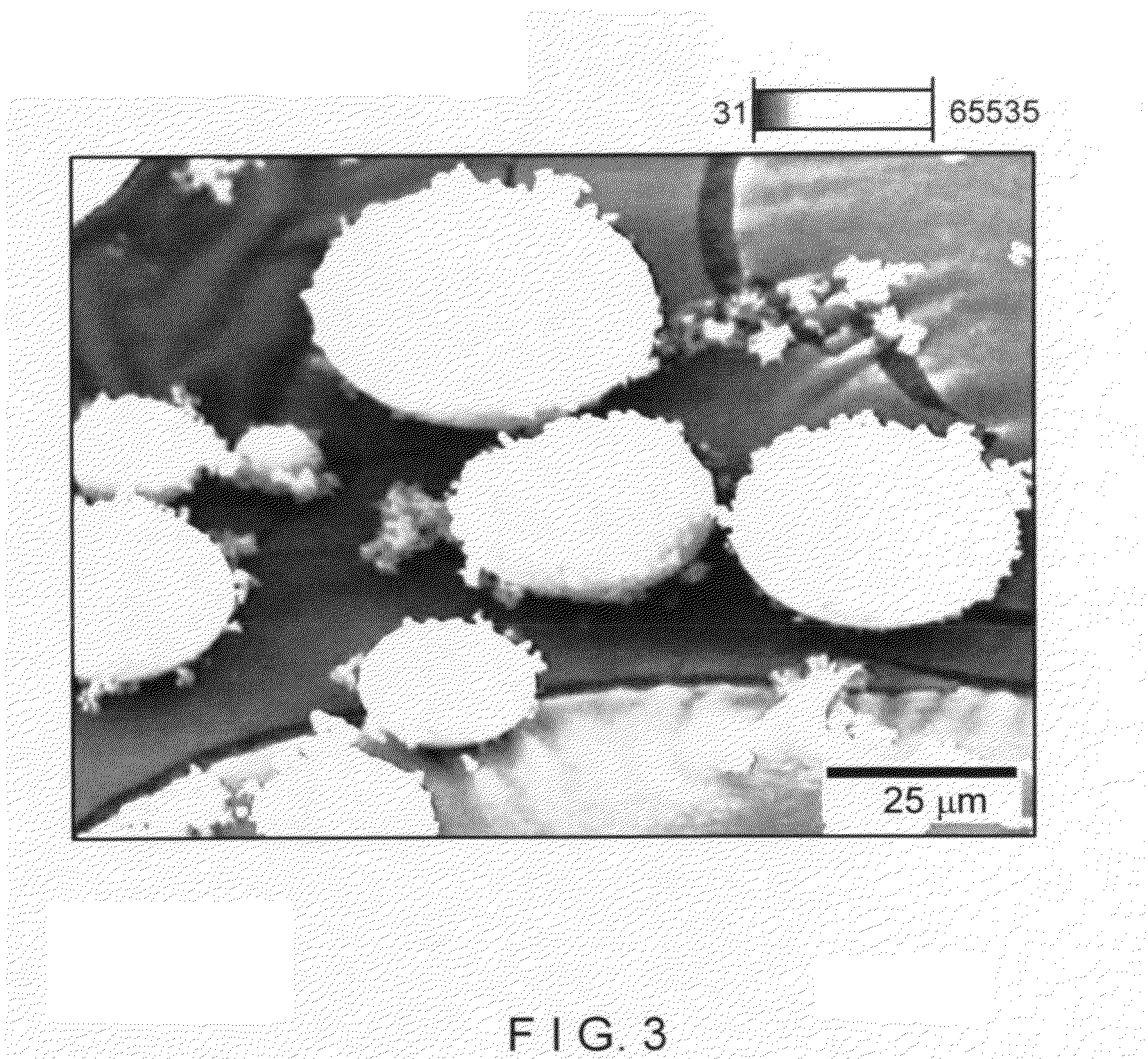Conversion of gaseous carbon dioxide into aqueous alkaline and/or alkaline earth bicarbonate solutions
a technology of alkaline and/or alkaline earth bicarbonate and gaseous carbon dioxide, which is applied in the direction of alkali metal halides, calcium/strontium/barium carbonates, cation exchangers, etc., can solve the problems of complex reality, difficult to obtain resources in many developed and developing countries, and a large depletion of mineral resources
- Summary
- Abstract
- Description
- Claims
- Application Information
AI Technical Summary
Benefits of technology
Problems solved by technology
Method used
Image
Examples
example 1
[0090]A blank or control run was made without any cationic exchanger material. Into a well-cleaned 250 mL gas washing flask 7, 150 mL of previously boiled and room temperature tempered demineralized water was added. The on / off valve 4 was opened, a stream of nitrogen gas coming from source 2 at a pressure of 14 psig was allowed to flow at a rate of at least 250 mL / min, and a gas diffusor (8) was introduced into the flask 7. The time of nitrogen flowing was at least 5 minutes. Then a change in three-way valve 3 allows a 14 psig carbon dioxide gas flow from source 1 at a rate of at least 250 mL / min. The carbon dioxide gas flow time was 30 minutes at room temperature.
[0091]The amount of the bicarbonate (as anion) formed was 238 mg / L using the analytical procedure previously mentioned.
example 2
[0092]In this example an XC sodium form cationic exchanger material was examined. This is a commercial microsphere of faujasite type X zeolite, whose X ray diffraction pattern is shown in FIG. 2. The silicon-to-aluminum (mol / mol) ratio given by chemical analysis and specific BET surface area (S) is shown in table 1 of example 3. FIG. 3 presents a picture of scanning electron microscopy displaying a general view of microspheres of XC material, ranging in size between roughly 5 μm and 100 μm. FIG. 4 shows a picture of scanning electron microscopy of the microspheres of this XC cationic exchanger material.
[0093]Into a well-cleaned gas washing flask 7, a mass of cationic exchanger material XC was charged, and the procedure described in example 1 was carried out. The carbon dioxide gas flow time was also 30 minutes.
[0094]Using the analytical procedure previously mentioned, the amount of the bicarbonate (as anion) formed was 427 mg / L, and the phenolphthalein test for carbonate was negativ...
example 3
[0096]This example examines various sodium-form cationic exchanger materials of the aluminosilicate type. Besides the cationic exchange describe in example 2, the characteristics of others are shown in Table 1 below. FIG. 5 shows an X-ray diffraction pattern of the AC material, which represents a typical A zeolite. The AC material comprises a set of microspheres with a size distribution similar to that shown in FIG. 3. The AA and AX materials are both X-ray amorphous materials whose patterns are shown in FIG. 6 and FIG. 7 respectively. These materials are obtained from gels typical for synthesis of zeolites A and X respectively, but their syntheses were quenched before the crystal growth stages to obtain small nuclei and so a greater external surface. FIG. 8 shows the infrared spectra of AA and AX materials in the framework range of zeolite 380 cm−1 to 1300 cm−1. They display some bands of a typical IR pattern for zeolites, showing that a small range ordering exists in both material...
PUM
| Property | Measurement | Unit |
|---|---|---|
| specific surface area | aaaaa | aaaaa |
| temperature | aaaaa | aaaaa |
| temperature | aaaaa | aaaaa |
Abstract
Description
Claims
Application Information
 Login to View More
Login to View More - R&D
- Intellectual Property
- Life Sciences
- Materials
- Tech Scout
- Unparalleled Data Quality
- Higher Quality Content
- 60% Fewer Hallucinations
Browse by: Latest US Patents, China's latest patents, Technical Efficacy Thesaurus, Application Domain, Technology Topic, Popular Technical Reports.
© 2025 PatSnap. All rights reserved.Legal|Privacy policy|Modern Slavery Act Transparency Statement|Sitemap|About US| Contact US: help@patsnap.com



